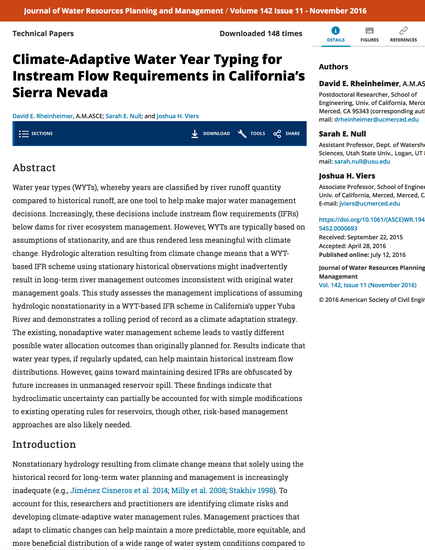
Article
Climate-Adaptive Water Year Typing for Instream Flow Requirements in California’s Sierra Nevada
Journal of Water Resources Planning and Management
(2016)
Abstract
Water year types (WYTs), whereby years are classified by river runoff quantity compared to historical runoff, are one tool to help make major water management decisions. Increasingly, these decisions include instream flow requirements (IFRs) below dams for river ecosystem management. However, WYTs are typically based on assumptions of stationarity, and are thus rendered less meaningful with climate change. Hydrologic alteration resulting from climate change means that a WYT-based IFR scheme using stationary historical observations might inadvertently result in long-term river management outcomes inconsistent with original water management goals. This study assesses the management implications of assuming hydrologic nonstationarity in a WYT-based IFR scheme in California’s upper Yuba River and demonstrates a rolling period of record as a climate adaptation strategy.
Disciplines
Publication Date
2016
DOI
https://doi.org/10.1061/(ASCE)WR.1943-5452.0000693
Citation Information
Rheinheimer, DE, Null, SE, Viers, JH. 2016. Climate-Adaptive Water Year Typing for Instream Flow Requirements in California’s Sierra Nevada. Journal of Water Resources Planning and Management 142(11). https://doi.org/10.1061/(ASCE)WR.1943-5452.0000693
